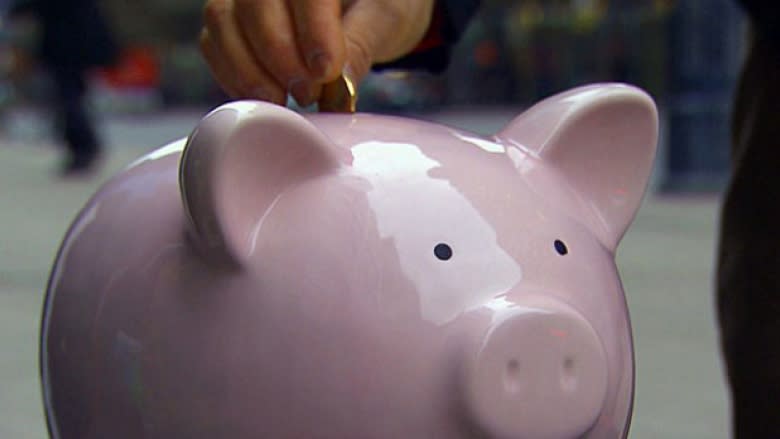RESPs: free money from government that half of Canadians don't ask for
Millions of Canadians struggle under the financial burden of parenthood. Everything from diapers to daycare push many to their limit.
It's hard enough to pay the bills, let alone save for the kids' education. That's why it's so baffling that less than half of those eligible participate in a program offering parents free money for their kids post-secondary education.
Ottawa offers thousands — that's right, thousands — of dollars to help families defray the cost of tuition. But most of us just leave that money on the table: the most recent data from Statistics Canada shows the participation rate is less than half.
What jackpot am I talking about? It's a Registered Education Savings Plan, and any Canadians with a kid can open one. And here's the best part: for every dollar you put into the plan, the government kicks in a little extra for you.
We asked personal finance writer Kerry Taylor for her top five tips on how to take advantage of this free money for your child's future.
1. Just open one
A Registered Education Savings Plan is really just a shell. So even if you don't have money to put into it right now, open a shell for yourself so it's ready and available for the moment you do. Even Taylor herself wasn't in a financial position to contribute to an RESP until this year.
"It's really hard as a new parent: you're struggling, you have daycare payments, it flattened me," she says. "So it wasn't until the day care burden eased that I could redirect that money into my daughter's RESP."
Even as little as $5 or $10 at a time can get you started. Every bit helps, and the best part is that Ottawa will add at least 20 per cent of your contribution — and maybe more.
2. Low income? Even better
The government contribution comes through something called the Canada Education Savings Grant. Anyone with children has access to those grants, but how much you get depends on your family's income.
The basic plan provides 20 cents on every dollar contributed, up to a maximum of $500 from Ottawa if you put in $2500.
But you can qualify for even more. Depending on your income, the government portion can rise to as much as 40 cents for every dollar you put in yourself.
For lower income Canadians, there is also something called the Canada Learning Bond. If you qualify for that, Ottawa will give you $2000 for your RESP whether you contribute a penny or not.
But Taylor says less than a third of those eligible for that free $2000 actually participate in the program. "It's a huge loss, because all parents have to do or families is open up an RESP at their financial institution and that money goes in when they qualify," she says.
3. Play catch-up
Many people didn't get started right away, so they don't bother playing catch-up. The Canada Education Savings Grant allows families to carry forward unused contribution room. So, you can catch up from the previous year's contribution.
"You can bring one year forward," says Taylor. "You put in $2,500 from last year and $2,500 from this year, you'll get up to $1000 from the Canada Education Savings Grant."
Taylor didn't start contributing right away due to the staggeringly high cost of raising a young child. But her daycare costs slowly began to fall after her daughter's first year in care. As that money came available, she put it straight into an RESP.
She also qualifies for money through the Canada Child Benefit. Combined, that money adds up pretty quickly.
"I take the money I used to put to my kid's daycare costs, and I redirect to my child's RESP," she says.
"If you qualify for the Canada Benefit, why not take some of that money and use it as well? Take the government's money and make them match it. That's like a double whammy."
4. Use it or lose it (kind of)
But how do you know what your child will do 17 years from now? As you look down at a swaddled baby or a toddler running roughshod over your house, it's sometimes hard to imagine them figuring out tuition costs and residence bills.
An RESP has some wiggle room built in, because you can keep one open for up to 31 years after its opened.
"So the kid can take a gap year, a gap 10 years," says Taylor. "Don't worry too much. But if the kid doesn't go to school you can roll it into your RRSP, or you can change the beneficiary — but the grant goes back to the government."
That's an important detail, so it's worth repeating: if the child named in the RESP doesn't go to university or college, the government portion disappears. But all your contribution is still there, and you have several options to roll it over or rename the beneficiary (for example, to a grandchild).
5. Ask for help
You can get information at just about any financial institution. The government's website is wildly helpful. No end of financial planners write at length about this. And websites like smartsaver.org have reams of data available at the tips of your fingers.
But remember, this is free money. Up to $7,200 just sitting there, waiting for you to come get it. So, ask for help. It's well worth a few questions, a search online or a visit to the branch of your financial institution.

 Yahoo Finance
Yahoo Finance 

